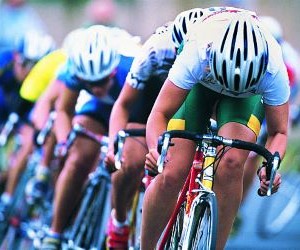Learn how to deal with punctures on long rides with prevention tips, repair techniques, and smart gear choices to keep rolling without stress.
WHAT ARE THE MOST COMMON MISTAKES IN INDOOR CYCLING?
Indoor cycling offers massive benefits, but many enthusiasts unknowingly sabotage progress with common mistakes. From poor posture and resistance misuse to skipping warm-ups and overtraining, errors can stall performance, increase injury risk, and reduce enjoyment. This guide breaks down the most frequent mistakes in indoor cycling, why they matter, and how to correct them with data-driven solutions. Whether you’re a beginner or seasoned rider, you’ll learn how to optimize form, manage intensity, and adopt smarter recovery strategies. By avoiding these pitfalls, you’ll ride stronger, safer, and smarter — turning every session into a high-yield investment in your health and endurance.

Poor form and posture
Indoor cycling looks straightforward: sit, pedal, sweat. Yet form and posture are where most riders lose efficiency and invite injury. Leaning too far forward, arching the lower back, or locking elbows may feel natural but can strain joints and muscles. Proper alignment is the difference between a powerful ride and nagging pain.
Why posture matters in cycling
Cycling is a repetitive movement sport, and small errors in alignment multiply over hundreds of pedal strokes. Slouching shoulders or craning the neck compresses nerves, while poor core engagement forces your legs to do all the work, limiting endurance. According to sports medicine studies, improper bike setup and posture account for more than 60% of reported indoor cycling injuries.
Set handlebars to reduce back strain.
Keep wrists neutral, not bent.
Engage your core to stabilize movement.
Relax shoulders away from ears.
Practical corrections
Film yourself or use mirrors to analyze riding form. Many riders don’t realize they hunch or tilt until they see themselves. A neutral spine, relaxed grip, and slight bend in elbows distribute workload evenly across muscle groups, reducing burnout. Think of posture as your investment in sustainability: good form compounds gains, bad form compounds risk.
Ultimately, posture isn’t about looking perfect on the bike — it’s about creating mechanical efficiency. The more aligned you are, the less energy wasted, and the more performance you can bank over time.
Resistance and cadence misuse
Two numbers dominate indoor cycling: resistance and cadence. Get them wrong, and you either spin out without progress or grind joints under impossible load. Striking balance is where most riders stumble.
The risks of low resistance
Many beginners fear adding resistance, defaulting to "spinning air." While high cadence with no resistance feels easy, it destabilizes the hips, strains knees, and wastes energy. Without enough resistance, you’re essentially running on ice — lots of motion, little progress.
The dangers of overloading
At the other extreme, stacking resistance too high turns your workout into a slow grind, overtaxing knees and lower back. This mistake mirrors weightlifters loading the bar without mastering form: it looks impressive but accelerates wear and tear. Over time, over-resisting undermines both speed and joint health.
Keep cadence between 80–100 RPM for flats.
Use heavier resistance only for short climbs.
Listen for pedal "thumping" — a sign resistance is too low.
Track output power, not just perceived exertion.
Optimizing the balance
Smart cycling platforms now show power zones, allowing riders to monitor output relative to body weight. Training in these zones is more productive than blindly cranking resistance. Think of it as financial portfolio management: diversify between speed and strength. Too much of either leaves you exposed; balance builds resilience and long-term gains.
Cycling isn’t about brute force or spinning like a fan. It’s about calibrated effort. By managing resistance and cadence, you not only avoid mistakes but also maximize every ride’s return on investment.
Neglecting recovery and variety
Many riders equate indoor cycling with "all gas, no brakes." They chase sweat as a badge of honor, skipping recovery days and repeating the same class format. While the hustle mentality feels rewarding, physiologically it’s a trap. Muscles don’t grow during exertion; they grow during rest.
Why recovery matters
Skipping rest days spikes cortisol, blunts fat metabolism, and increases overuse injury risk. Data from endurance athletes shows that structured recovery boosts power output by up to 15% over time. Without it, you’re essentially compounding fatigue instead of gains.
The trap of monotony
Another hidden mistake is sticking to the same ride profile — flat, climb, sprint, repeat. Muscles adapt quickly, and without variation, progress plateaus. Just like diversifying assets prevents financial stagnation, mixing ride styles ensures continuous returns.
Alternate between endurance and interval sessions.
Add strength training to support cycling performance.
Schedule at least one full recovery day weekly.
Use yoga or mobility drills for active recovery.
Smarter strategies for longevity
Think of cycling as a marathon investment, not a quick trade. Build periodization into your schedule: heavy weeks followed by deload weeks. Incorporate variety — hill climbs, HIIT, and endurance rides. This approach trains multiple energy systems, keeps motivation fresh, and prevents burnout.
Ultimately, the most common mistake isn’t riding wrong — it’s riding without strategy. By respecting recovery and embracing variety, you create a sustainable cycling practice that pays dividends in health, strength, and mental resilience for years to come.
YOU MAY ALSO BE INTERESTED






